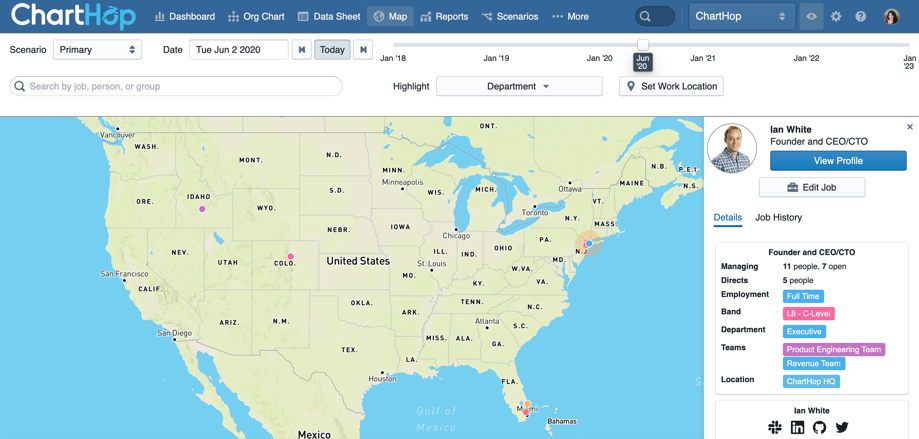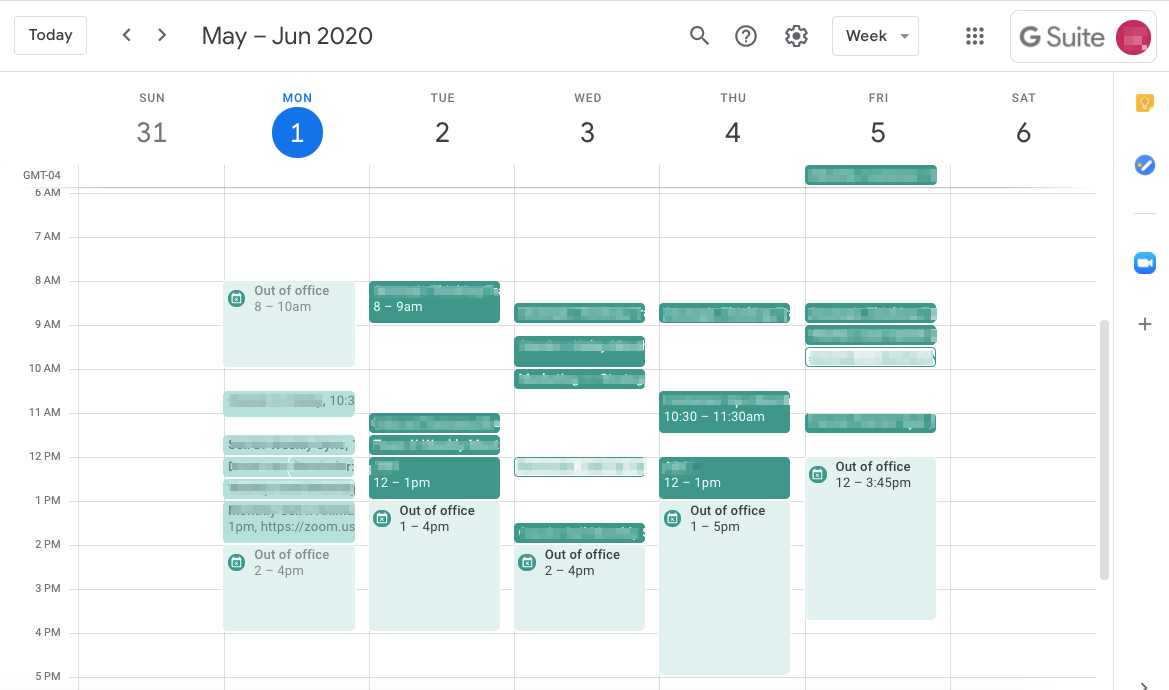When ChartHop went remote in late February, we thought we’d be back in the office by summer. But the summer is here, and now our plan is to work from home indefinitely.
Like many other businesses, ChartHop is continuing to work remotely because it keeps our team safe. But there is another non-pandemic factor that backs up our choice: productivity.
Some managers fear that remote work can decrease output. How will employees get their work done if managers can’t oversee them in person? But working from home can lead to similar (if not greater) levels of output, even for employees who have kids. In a recent Prodoscore study, workforces were 47% more productive in spring 2020 compared to spring 2019, with many more of the 2020 respondents working remotely (and many alongside their families).
Read More: TecHRseries Interview With Scott Absher, CEO And Co-Founder Of ShiftPixy
At ChartHop, we’ve already seen this in action. Our team is humming and we’re building features that were planned for Q3 and Q4, because working from home has boosted productivity.
The key to remote work productivity is to strengthen connection and collaboration. The more connected teams are, the more managers can empower employees to complete their work with autonomy.
Take extra steps to learn how employees are feeling
At an office, managers pick up on employees’ body language. Team members might be down and stay quiet at their desk during a week of troubling national news. Or an employee might have an extra bounce in their step after giving a well-received presentation.
It’s difficult, and sometimes impossible, to pick up on these physical and verbal cues when you’re working from home. Video chat helps, but it’s not a true replacement for in-person interactions.
With less visibility, remote managers should check in with employees more systematically than they would in the office. Managers should already be having weekly or bi-monthly 1:1s, now keeping those on schedule becomes even more important than before. Along with discussing output, managers should reserve time to check in how the employee is feeling during these meetings.
Video chats are better than phone calls for 1:1s. Zoom and Google Hangouts may not be perfect replacements for in-person meetings, but picking up on employees’ verbal tone and facial expressions is important.
Meeting more frequently is just step one. There also needs to be a process for tracking how employees feel over time. With this data, managers can pick out which employees need the most support and whether there are recurring issues across the entire team.
To record how their employees are doing, managers should take notes during 1:1s. They can also send employees a weekly survey about their happiness. Every week, ChartHop team members answer the question, “How did this week go?” with a 1 to 5 rating (1 is terrible, 5 is excellent).
This feedback is helpful for evaluating feelings across the entire company. In early March, for example, we noticed a slight dip just as the country started sheltering in place.

Never assume that remote team members will openly announce how they’re feeling (they probably won’t). Instead, managers should proactively check in with employees to be aware of their mental state. In times of crisis, it is normal and expected for employees to not be at a hundred percent. Make sure managers take this context into account when defining outcomes and assessing performance, too.
Read More: Employee Wellness During A Crisis: 7 Ways To Help
Make output expectations crystal clear
It doesn’t matter whether employees are working from home or at the office — they can’t get their work done unless they know what managers expect of them. With that said, clarifying these expectations is much easier in an office. Team members can swing by their manager’s desk to quickly ask about an upcoming assignment.
When you’re working from home, employees are less able to sync with leaders on the fly. As a workaround, remote organizations need virtual outlets that allow managers to share output expectations and team members to communicate progress.
One of these outlets is the weekly 1:1 video meeting mentioned earlier. Managers and employees can discuss work that should be completed over the next week and can brainstorm solutions to potential roadblocks.
They can also use messaging platforms to stay updated on assignments. At ChartHop, we have a “daily stand-up” Slack channel for employees to share their work for that day and the day before, along with any obstacles (“blockers”) that other team members may be able to solve.
Along with checking in on short-term tasks, managers should communicate high-level job expectations to employees. These are the goals team members must complete in order to progress to the next level of their position. At ChartHop, everyone has a set of KPIs and responsibilities that are shared with the organization on their ChartHop profile page. This increases visibility and accountability across the team – plus, it’s a great tool for onboarding new hires.

The 1:1 is a good time to discuss these objectives and identify what actions the employee needs to take to meet them. Outside of the 1:1, managers and employees can use performance management software to record and track these goals. These tools can keep the employee accountable and provide visibility on progress across the team.
Set boundaries for remote communication
Remote work makes asynchronous team communication much more common. Employees and managers have multiple ways of virtually reaching out—Slack, Zoom, to name just a few—and they’re able to communicate at any time of day.
This flexibility, for the most part, is a perk of working from home. But it can also create confusion and burnout. Employees may not know which communication tools they should use, and they may feel the need to be responsive at all hours, especially if the team spans multiple time zones, like ours.

To provide clarity, managers should set clear guidelines on when and how to communicate. A good starting point is to ask employees to be mindful of their coworkers’ time zones and personal schedules. Team members should add out-of-office hours on their shared calendar so everyone knows when others are available.

ChartHop managers also ask employees to share Slack status updates if they need to go off-line temporarily. This protocol has been especially helpful during COVID-19, since many team members are caring for their kids while working.

Of course, collaboration becomes difficult if everyone has a unique schedule. To create overlap, managers should ask employees to work a minimum number of hours in the most common time zone. A team that mostly has New England-based employees, for example, might have to work at least five hours in Eastern Time.
Along with navigating different schedules, remote workers may not know when to use all of your organization’s virtual communication methods. Ask managers to create a cheat sheet that outlines use cases. At ChartHop, we segment communication according to this criteria:
- Video chat: 1:1s, team stand-up meetings, all-hands meetings
- Slack: Short or urgent messages and questions; random, non-work content for social channels
- Email: External communication; important, long internal messages
If you’re not sure how to distinguish between tools, consider modeling your cheat sheet off of this resource: Slack vs. Email vs. Meeting. It describes the situations when each tool should be used, along with other factors to keep in mind when using these communication methods.
Provide extra support to your managers
Switching to working remotely is a big shift for everyone. Add the stress that comes with COVID-19 and it’s easy to see how employees might find this time overwhelming.
Managers need to be there for their team members as the company prepares for remote working in the long-term. When employees voice concerns about their work, it’s up to leaders to help them find ways to overcome their obstacles.
But don’t forget that managers will need extra support, too. After all, their workload just increased: they’re meeting with employees more frequently and spending more time collaborating with them virtually.
If managers show signs of burnout, it may be time to reduce their span of control. After all, large teams are worthwhile only if managers can fully support each employee.
Read More: Can Employees Help Lead The Way Out Of This Covid-19 Crisis?

